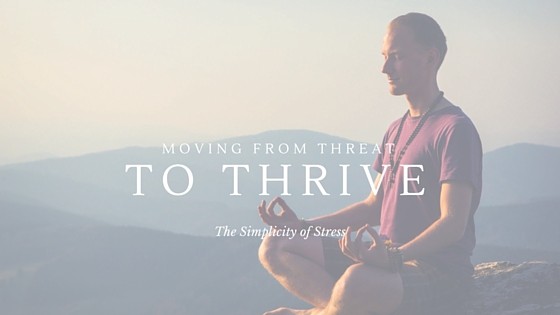During the 20th Century, the burden of disease shifted quite significantly to be one from changes in our lifestyle. In the early 1900’s, Pneumonia and Tuberculosis were the leading causes of death in our culture. Since 2010, the leading causes of death are Heart Disease, Cancer, Respiratory Disease, Stroke and Diabetes. What’s the cause of these diseases? That has shifted too. It’s now Stress:
- CDC has stated, “90% of visits to doctors are for stress related illness with 60% of these being repeat visits”
- AMA has stated, “85% of illness is caused by stress”
- A.P.A. & Stress Institute Study stated, “Stress is one of leading causes of divorce, addictions, and weight gain/obesity
Until the turn of the millennium, stress was considered a major problem only after a life crisis. Today’s stress is more persistent than ever because of the accelerating pace of modern life and constant change.
Not only are we feeling the impact physically, but financially. Healthcare costs continue to rise impacting both employees and corporations. The World Health Organization reports employers lose $300MM/year on stressed employees. And the worst part, we haven’t reached the tipping point yet. Millennials have been recognized as “Generation Stress”. If our lifestyles don’t improve as this generation ages, we will reach a certain state of crisis. And we were worried about Snowmaggedon2016. How about StressMaggedon?
Now, I’m not one to live in fear. In fact, most of my lifestyle and performance coaching is moving clients away from fear-based thinking models and beliefs. Having said that, do I have your attention? These are the cold hard facts on the health and well-being of our culture.
I do have some good news. It’s not all gloom and doom. In fact, it’s quite positive because the solution is really quite simple. Research indicates today’s stress is caused by our perceptions of the events in our lives, rather than the events themselves. The unfortunate result of our hurried world is widespread. So, here’s the good news. We don’t need to wait for a new advanced medical technology, we don’t need to wait for a new medication and we don’t need to undergo a debilitating surgical procedure that requires weeks or months of rehabilitation. The answer is quite inexpensive and available to all of us right now. When we change our thoughts, we improve our lives and our health.
Please let me explain. The Simplicity Of Stress is understanding we live in the feeling of our thinking. The emotional response of our thinking (perception) drives our behaviors or lifestyle choices. It’s these choices that are getting us into trouble. When we become willing to mindfully peel back the layers and examine the nature of how we’re translating daily events, interactions and beliefs to ourselves and those around us, we can begin to make modifications to our thought patterns which will in turn change our emotional and behavioral response to them. This is an awareness-based model of self regulation and transformation through neuroplasticity.
Now if you’re reading this last paragraph and your mind is immediately telling you “I don’t have time for this”, you’re probably right. You see, what we believe to be true, is what we create. And since most of us are operating from our stress response system, the quality of our thoughts and emotions don’t naturally support positive habitual change. The stress response system is also known as the “fight or flight” system. We process thoughts in a hyper-vigilant state of being in the amygdala and they get stuck in “distress” thinking patterns. We “perceive” threat in this system and are designed to take action against this perceived threat. So, there’s some basic physiology we’ve got to work with first to calm our body/mind and shift from “threat” into calmer states of awareness that are experienced from the relaxation response of our autonomic nervous system.
Practices like mindfulness, yoga and meditation are all tools to create harmony or balance in the body/mind. They are all based on the foundation of breath. How we breathe is the basis for transformation since how we breathe is communicating with the brain and autonomic nervous system to support stress or relaxation response.
To move from threat to thrive, we begin with some breathing techniques that signal the brain to shift from stress to relaxation or sympathetic to parasympathetic. The foundation of breathing is teaching how to breathe diaphragmatically. Most of us today are shallow breathers only using the upper portion of our lungs which is where the stress response nerve endings are housed. When we use our full quart lung capacity to breathe, we reach the relaxation response nerve endings which are housed in the lower portion of our lungs. Not only are we shallow breathers, our exhale is compromised. I like to teach clients how to inhale and exhale properly to develop a steady rhythmic breathing pattern.
Once we move from the perception of threat to thrive, the simplicity of stress is simple. It’s game on! We incorporate awareness-based strategies to improve cognition and transform lifestyle choices into ones that support our overall health and well-being.
Are you ready to starting reducing the stress in your life? Life isn’t about surviving, it’s about thriving. And the power to choose surviving or thriving is all in your head. Breathe … perceive … receive.
5 Tips On Reducing Stress With Breath
Stress Less Stress More Living Stress Management Breathing Healthy Living
Originally published at www.huffingtonpost.com on January 26, 2016.
Originally published at medium.com


